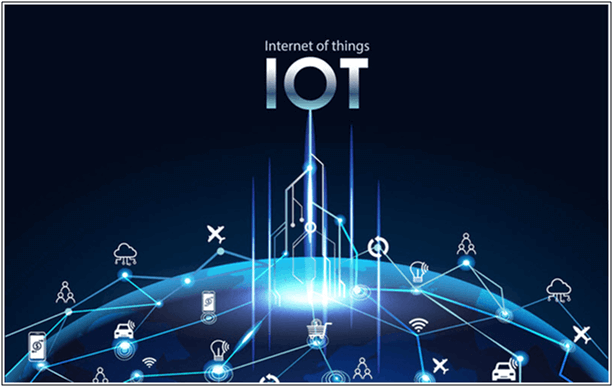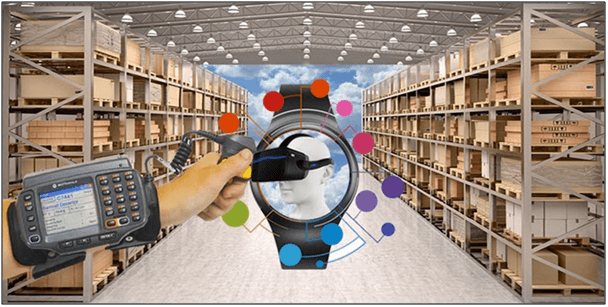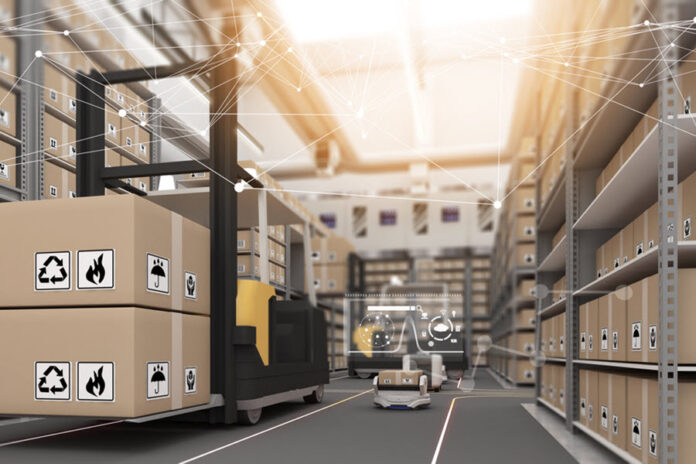The Internet of Things (IoT) technology is revolutionizing warehousing operations by connecting various sensors, devices and systems. Through a network of interconnected sensors and devices, IoT enhances visibility, efficiency, and control throughout the warehouse ecosystem. Real-time data collection and analysis facilitate the optimisation of equipment performance and minimise downtime. IoT-driven inventory tracking and management ensure precise stock levels, reducing the possibility of overstocking or shortages. Automated processes, guided by IoT-driven insights, streamline workflows, increasing overall productivity. However, it is imperative to implement stringent cybersecurity measures to safeguard sensitive data and systems from potential breaches. IoT in automated warehousing represents a paradigm shift, resulting in enhanced responsiveness, precision, and adaptability, thus shaping the future of supply chain management.

Table of Contents
The Logistics Application of Sensors and IoT
The logistics sector is witnessing a remarkable transformation, with the collaboration between Sensors and the Internet of Things (IoT). This partnership is driving significant advancements, reshaping the management of supply chains. Through the integration of intelligent sensors in cargo, vehicles, and facilities, real-time access to essential data such as location, temperature, and humidity is currently available. This data wealth empowers businesses to proactively make decisions, optimize routes, and pre-emptively address potential issues. The IoT acts as the connecting thread, seamlessly bringing these sensors together, and allowing for comprehensive data analysis and practical insights. Although challenges like data security and compatibility need consideration, the logistics industry is standing at the threshold of positive change. Tracking, monitoring, and resource allocation are all set to achieve new heights, highlighting the pivotal role that Sensors and IoT play in reshaping industry practices.

Optimizing Processes with IoT-enabled Solutions
IoT-enabled solutions are catalyzing a transformation in warehousing, ushering in a new era of optimization processes. The integration of the Internet of Things (IoT) into warehouse operations has led to significant advancements and novel practices. Through the fusion of IoT devices and sensors, warehouses achieve real-time visibility into their inventory, facilitating efficient stock management and mitigating costly errors. Intelligent sensors oversee equipment health, enabling predictive maintenance and minimizing downtime. IoT-powered automation streamlines order fulfilment, expediting operations while maintaining precision. This technology empowers warehouse managers with data-driven insights to refine layouts, enhance resource allocation, and elevate overall warehouse efficiency. With the IoT network continuously expanding, warehouses can enhance productivity, reduce operational costs, and swiftly adapt to evolving demands. The convergence of IoT and warehousing are redefining and fine-tuning processes for a more competitive future.
IoT for Green Warehousing
The Internet of Things (IoT) has a pivotal role in ushering in an era of sustainable practices within the realm of warehousing. IoT technologies empower green warehousing by enabling real-time monitoring and control of energy usage, temperature, humidity, and other environmental factors. These smart-systems optimize resource consumption, minimize waste, and enhance operational efficiency. Through interconnected sensors and data analytics, warehouse managers can make informed decisions to reduce carbon footprints, lower energy costs, and improve overall sustainability. By seamlessly integrating IoT solutions, green warehousing not only aligns with environmental goals but also contributes to economic viability and competitive advantage in a rapidly evolving logistics landscape.

Radio Frequency Identification and Barcode Technology
The incorporation of Internet of Things (IoT) technology into warehousing, alongside integrating Radio Frequency Identification (RFID) and Barcode technology, has brought about remarkable transformations in operations. By enabling devices to connect and exchange real-time data, IoT technology has taken warehouse management to a whole new level. RFID tags and Barcodes have further enhanced this technology by providing unique identifiers that enable precise inventory tracking and management. With this combination, warehouses now have critical insights into stock levels, location, and movement. Using IoT-enabled RFID and Barcodes has resulted in a significant reduction in errors, and manual tasks, and has decision-making to be more data-driven. This technology offers predictive maintenance and smarter resource allocation. This triad of IoT, RFID, and Barcodes is a powerful combination that elevates warehousing operations to new levels of precision, productivity, and responsiveness.
Mobile and Wearable Devices
Through the use of IoT technology in personal mobile and wearable devices has had a profound impact on warehousing operations. These high-tech devices are equipped with sensors and communication capabilities that enable real-time data collection from workers. This data includes vital signs, location, and movements, which are tracked to optimize task allocation and ensure heightened safety protocols. These devices act as a proactive alert system, notifying workers and supervisors about potential risks while working in hazardous environments. Utilizing smart glasses and voice command devices enables the transmission of step-by-step picking instructions visually through the glasses. By leveraging the synergy of human and digital resources, warehouse management can enhance operational efficiency, minimize downtime, and ensure the well-being of employees. Integrating IoT personal mobile and wearables represents a pivotal advancement in modern warehousing practices, helping increase productivity and reinforcing safety.

Automated Material Handling Systems
The introduction of Advanced Automated Material Handling Systems has revolutionized warehouse operations in recent years. Automated guided vehicles (AGVs) and autonomous mobile robots (AMRs) have minimized human intervention and increased productivity. The technology behind these systems is constantly evolving, with projects focused on improving their functionality. Vision technology, object identification technology, and artificial intelligence are utilized to evaluate working conditions and identify goods. These systems are also equipped with multiple sensors for data collection, allowing real-time monitoring of equipment efficiency and better decision-making. By implementing automated material handling systems, warehouses can enhance operational efficiency, mitigate workplace hazards, and help reduce employees’ stress levels, thereby bolstering workforce retention. With the continued advancement of technology, the usage of AGVs and AMRs is expected to become even more prevalent.
The full content is only visible to SIPMM members
Already a member? Please Login to continue reading.

